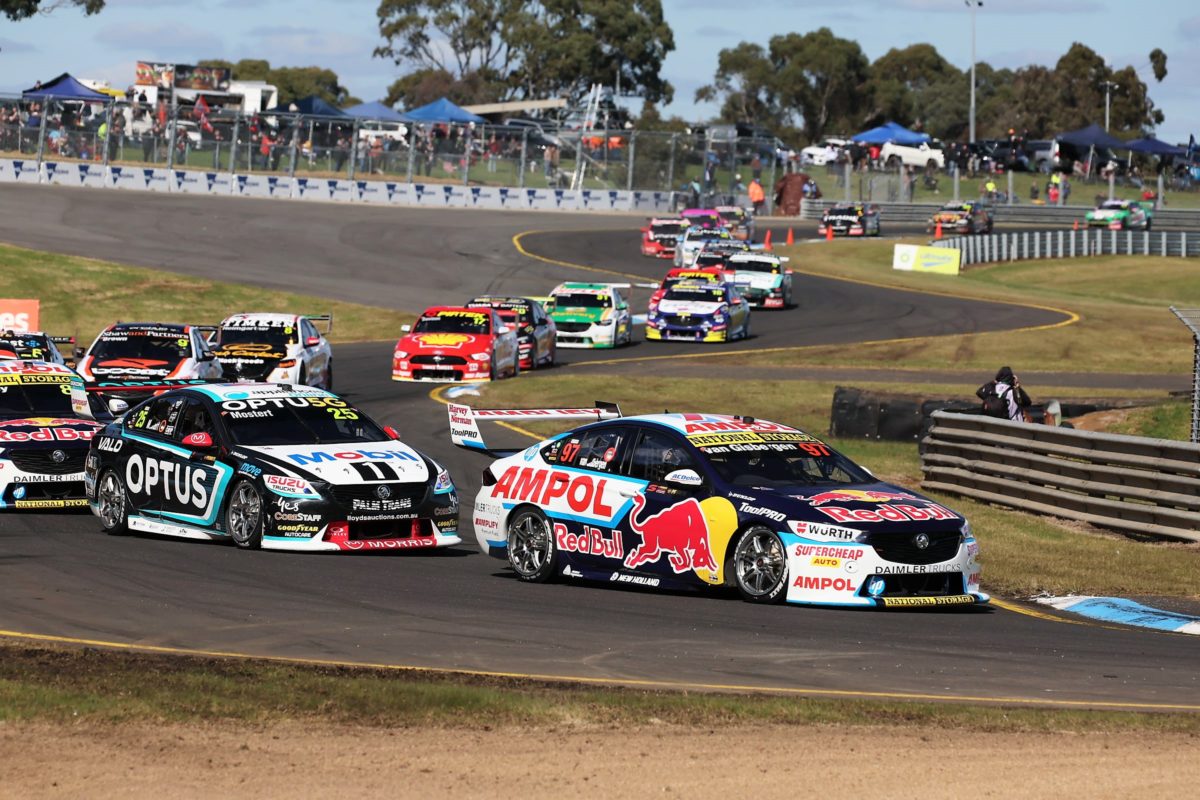

Brakes are set to be closely observed in this weekend’s Penrite Oil Sandown 500, the first enduro race of the Gen3 Supercars era.
While a pad change is not compulsory in Sunday’s 161-lapper around the suburban Melbourne circuit, Supercars has allowed teams to use two sets of front brake pads per car this weekend, instead of one.
That was also the case at Symmons Plains, another circuit which is tough on the stoppers, but the Tasmania SuperSprint was a trio of 100km races rather than 500km in a single afternoon.
Team 18 driver Scott Pye identified brakes as a potential challenge in the enduros.
“I think brake wear is something that’s still a little bit of an unknown going into Sandown,” he told Speedcafe.
“At the higher brake deg tracks, we saw a lot of brake degradation in Perth [Wanneroo], Tasmania as well, following other cars.
“I think that’s going to be interesting, probably even more so at Sandown [than Bathurst].”
Grove Racing Team Principal David Cauchi also recently noted that how brakes will perform over an enduro race is still something of a mystery, amid conjecture about how much mechanical sympathy drivers may need to exercise.
“We don’t know things like the braking system and where it’s going to end up after that amount of kilometres,” Cauchi told Speedcafe.
While it is the fronts which could fade over 500km of hard stopping at Sandown, Brad Jones Racing driver Macauley Jones has raised a potential issue with the rears, specifically that long pit stops could cause them to warp.
“The fuel drop is a lot longer than what it has sort of ever been over the last 10 years,” he said on the BJR Run Down podcast.
“So, you’re going to be spending a lot of time sitting there in pit lane with a line locker on. The line locker stops any wheels moving, so it’s effectively holding the rear brakes on by itself once you get to a certain pressure, which can then create hotspots.
“[That] can cause warping and when they get bad enough, it can be a big problem.
“So, that can be frustrating, but we’re going to have to find out some of those things for sure, and then heading into Bathurst we’ll have to adjust if need be.”
The Gen3 Supercars feature a 133-litre fuel cell, 20 percent bigger than the 111-litre tanks in the Gen2 cars, but the flow rate from the refuelling rigs is much slower at somewhere under three litres per second compared to 3.75 previously.
It means the time to fill from empty to full has jumped from around 30 seconds to the mid- to high-40s.
In addition to whatever risk that may create with respect to componentry, that will need to be factored into team’s strategy considerations, which have opened up this year thanks to the abolition of compulsory pit stops in the enduros.




















Discussion about this post